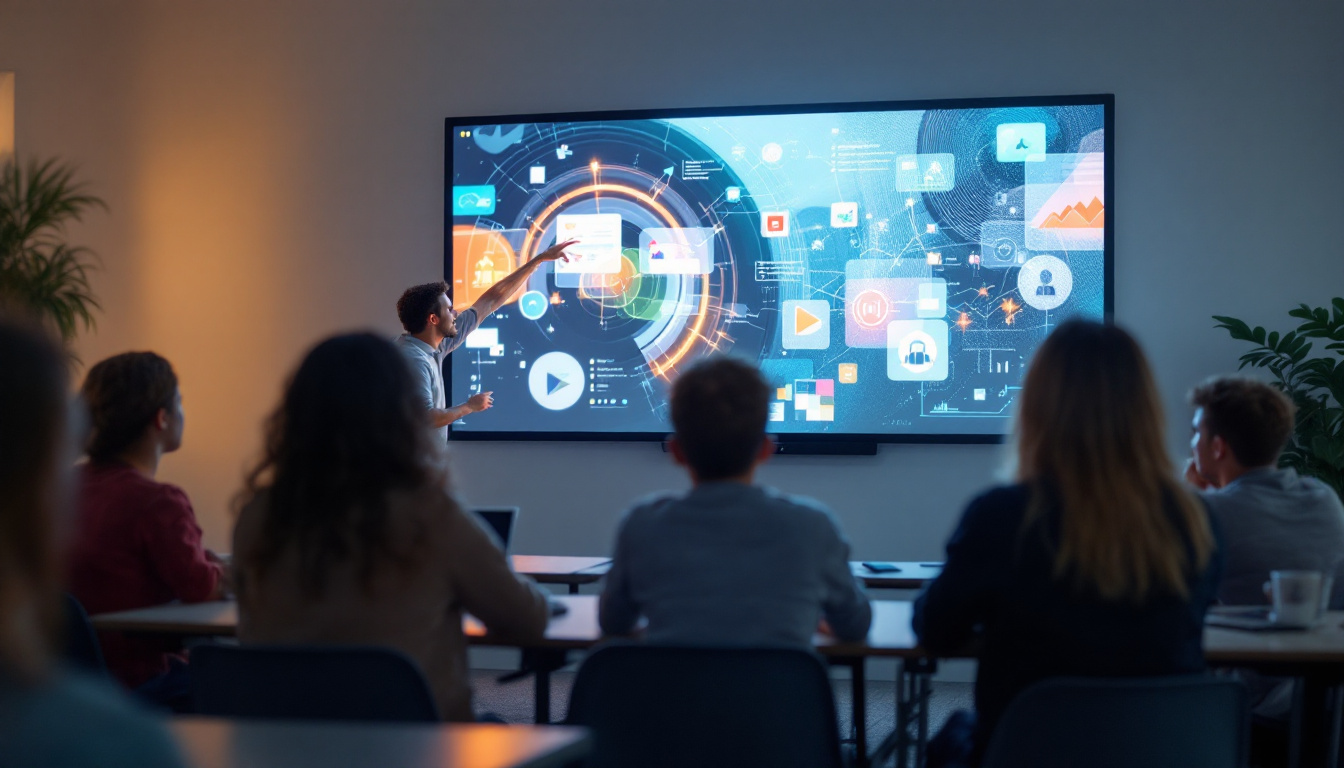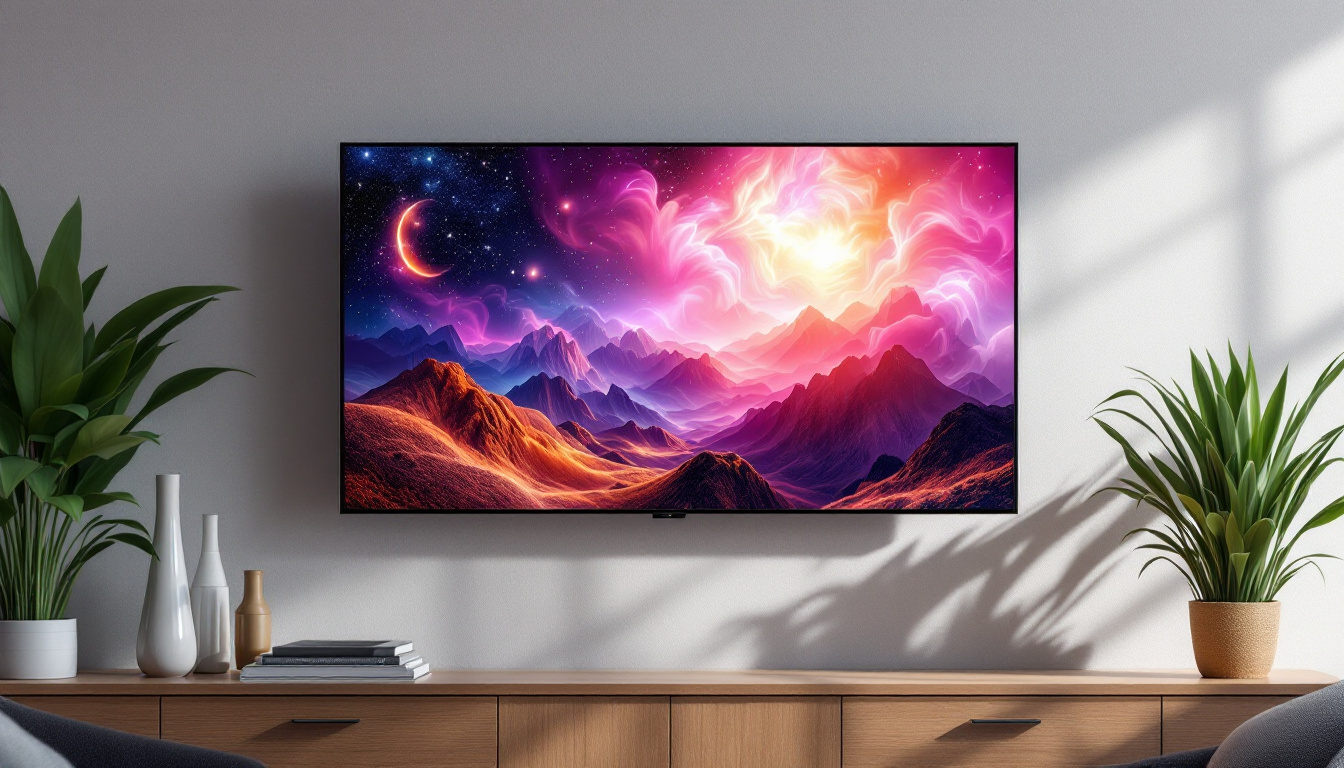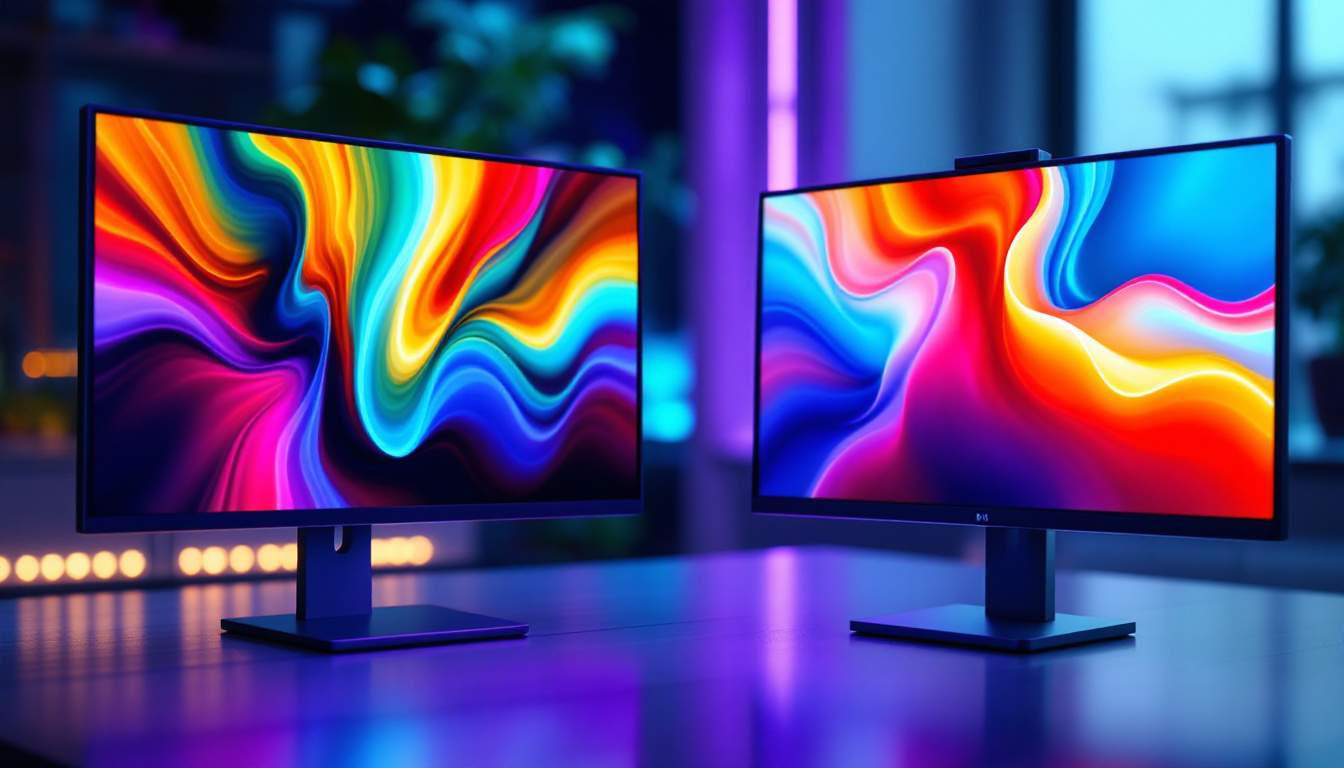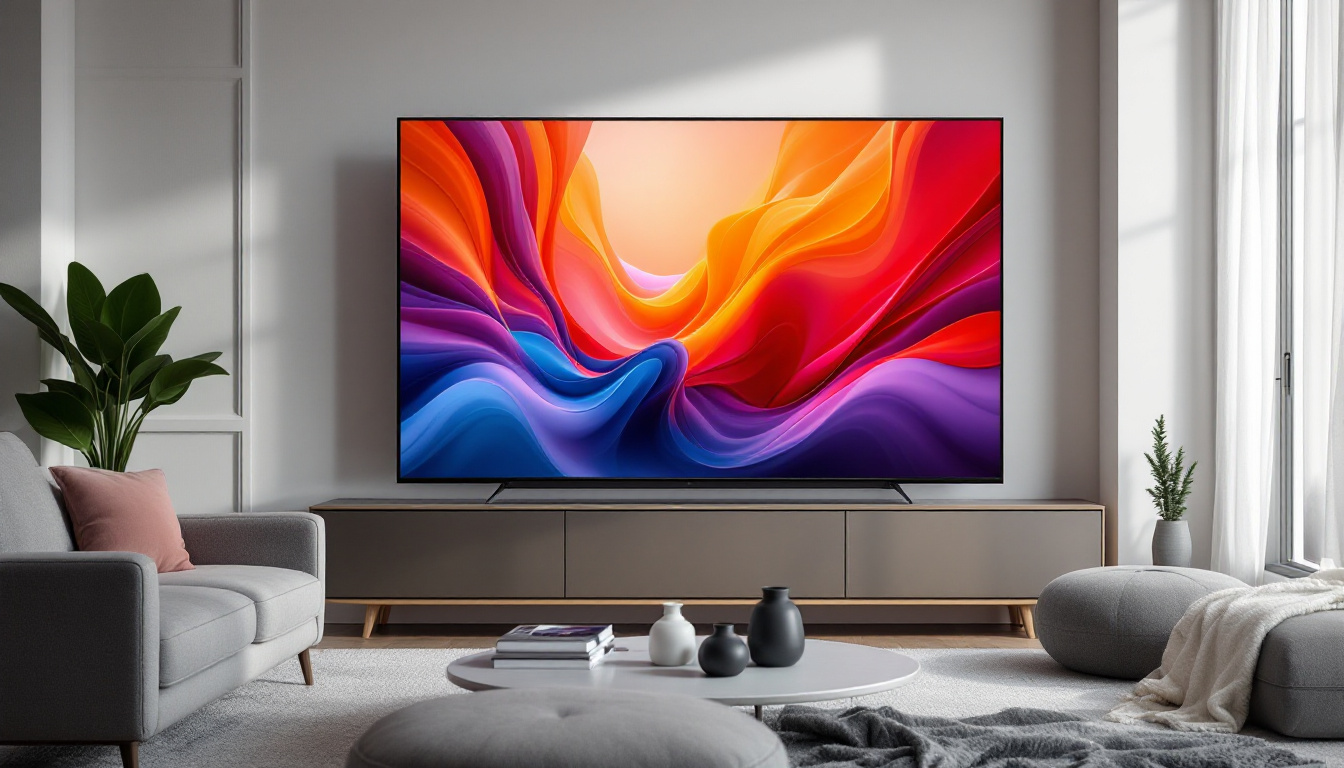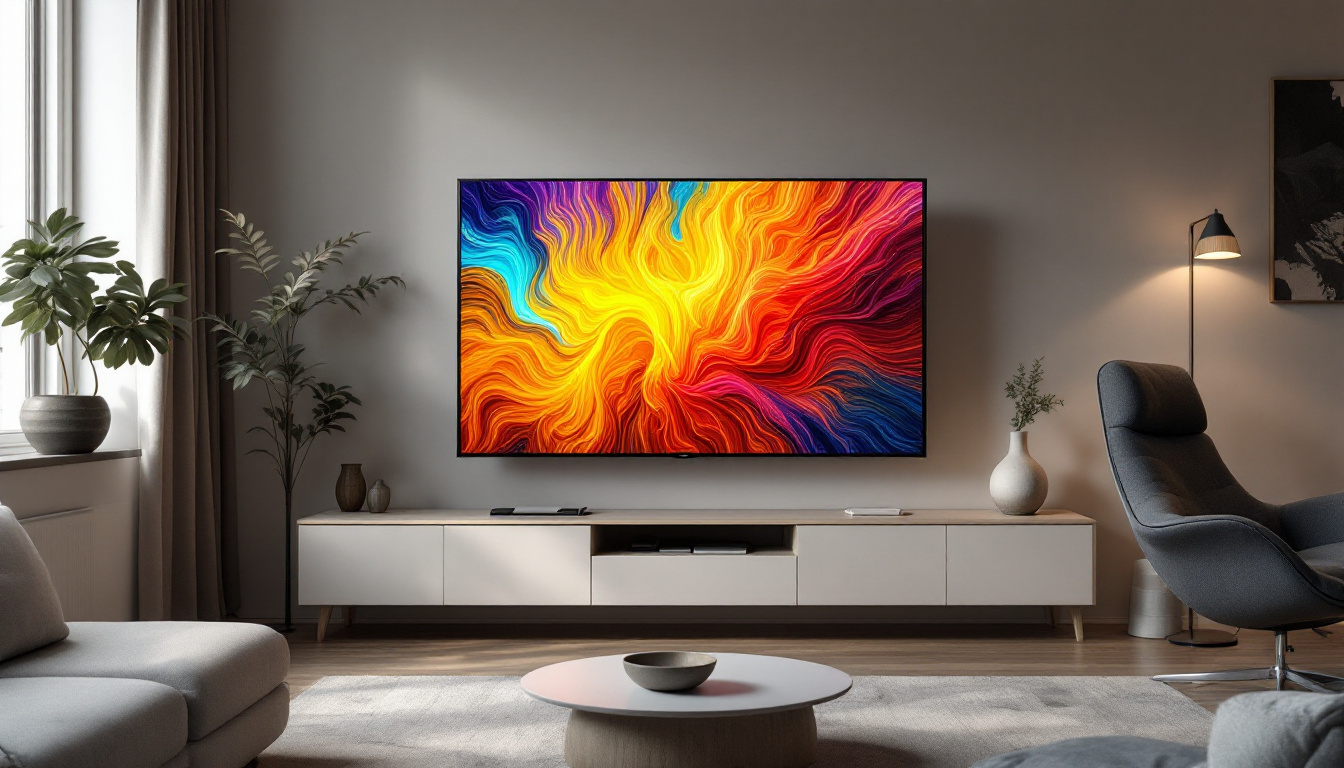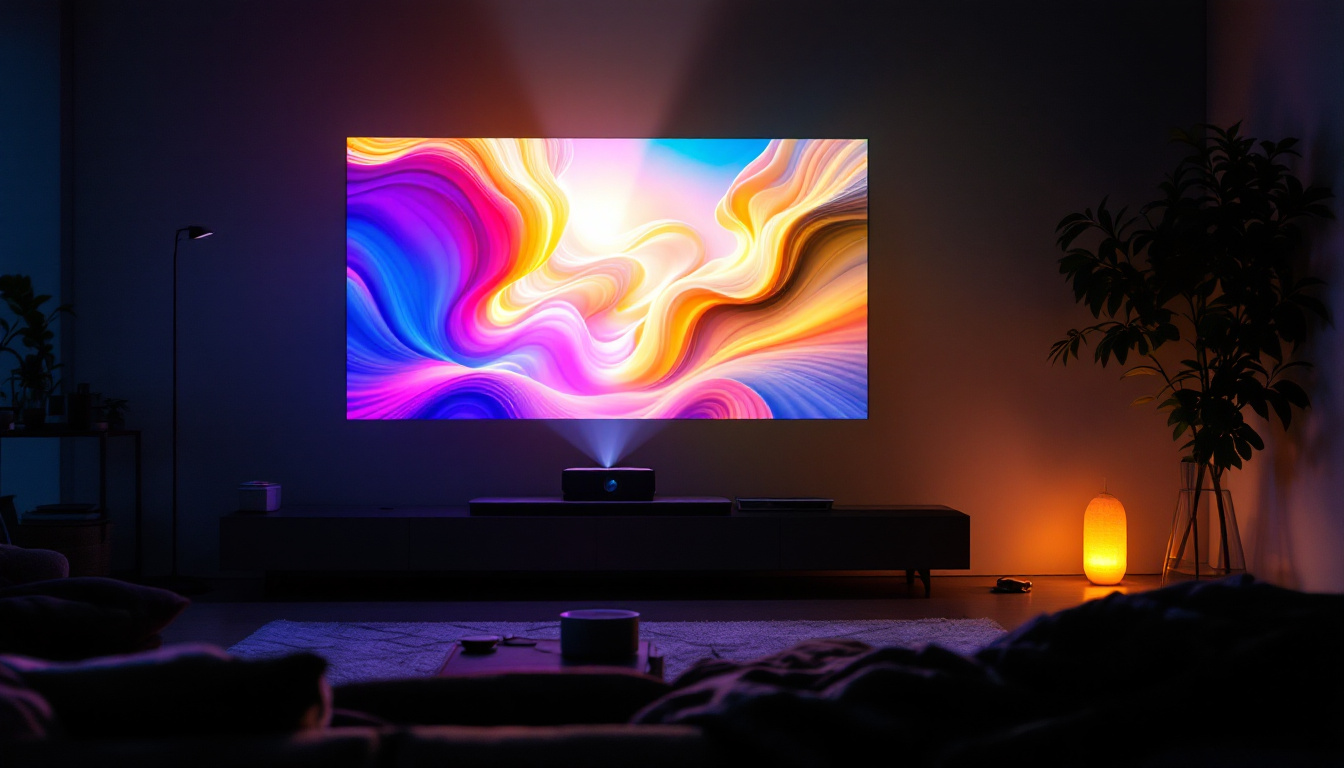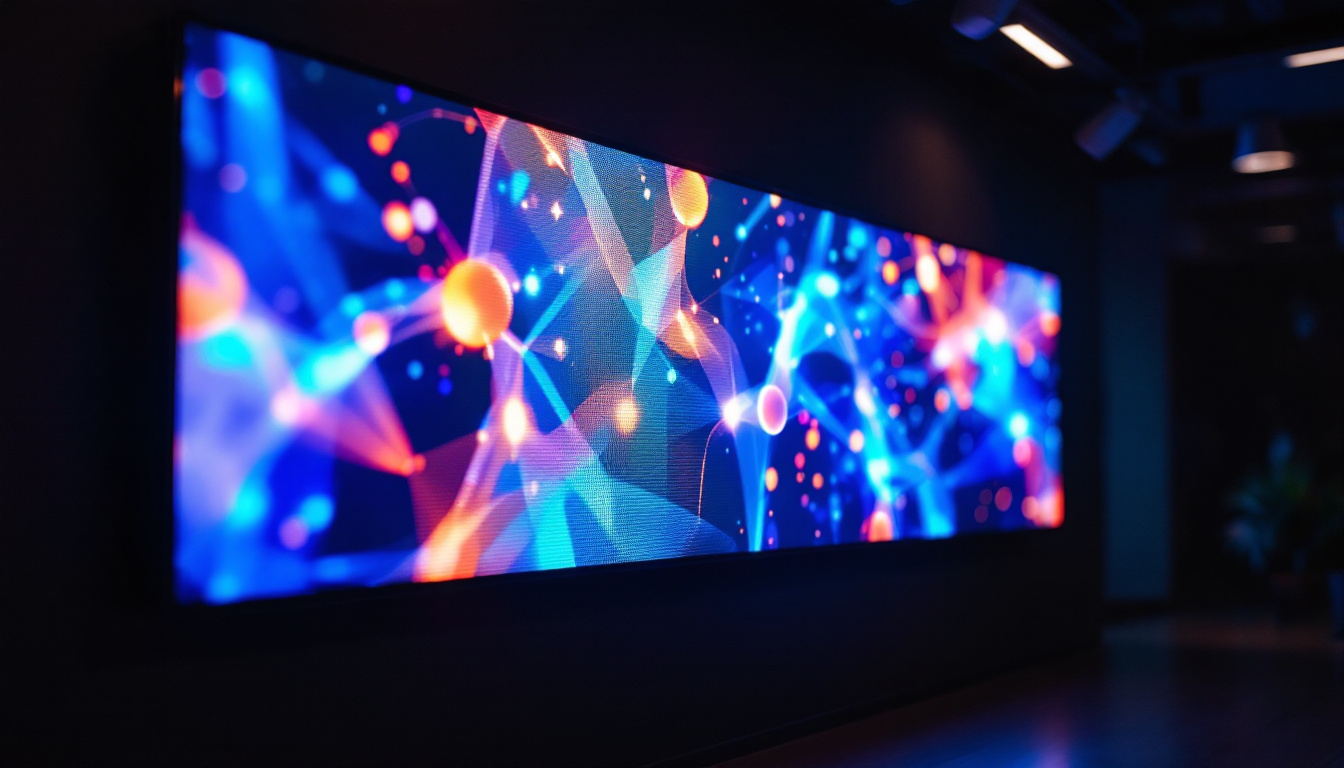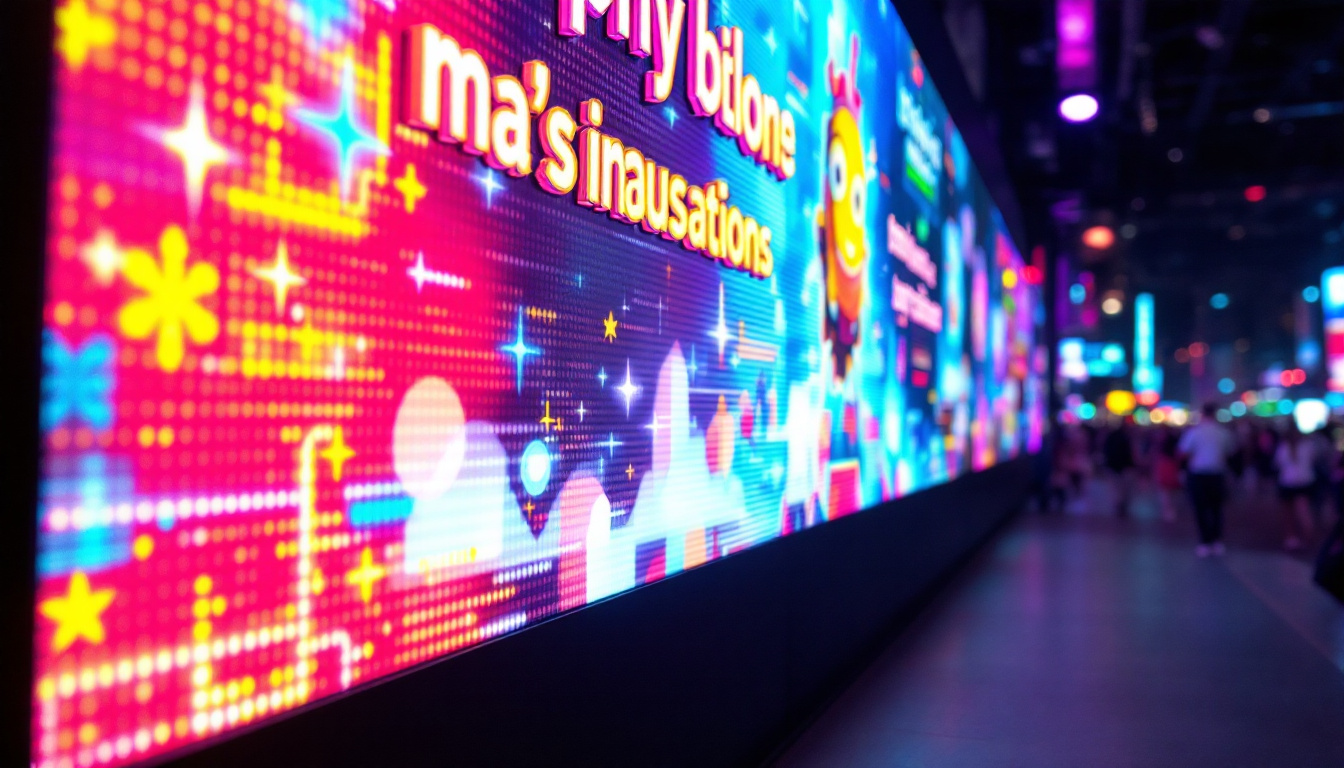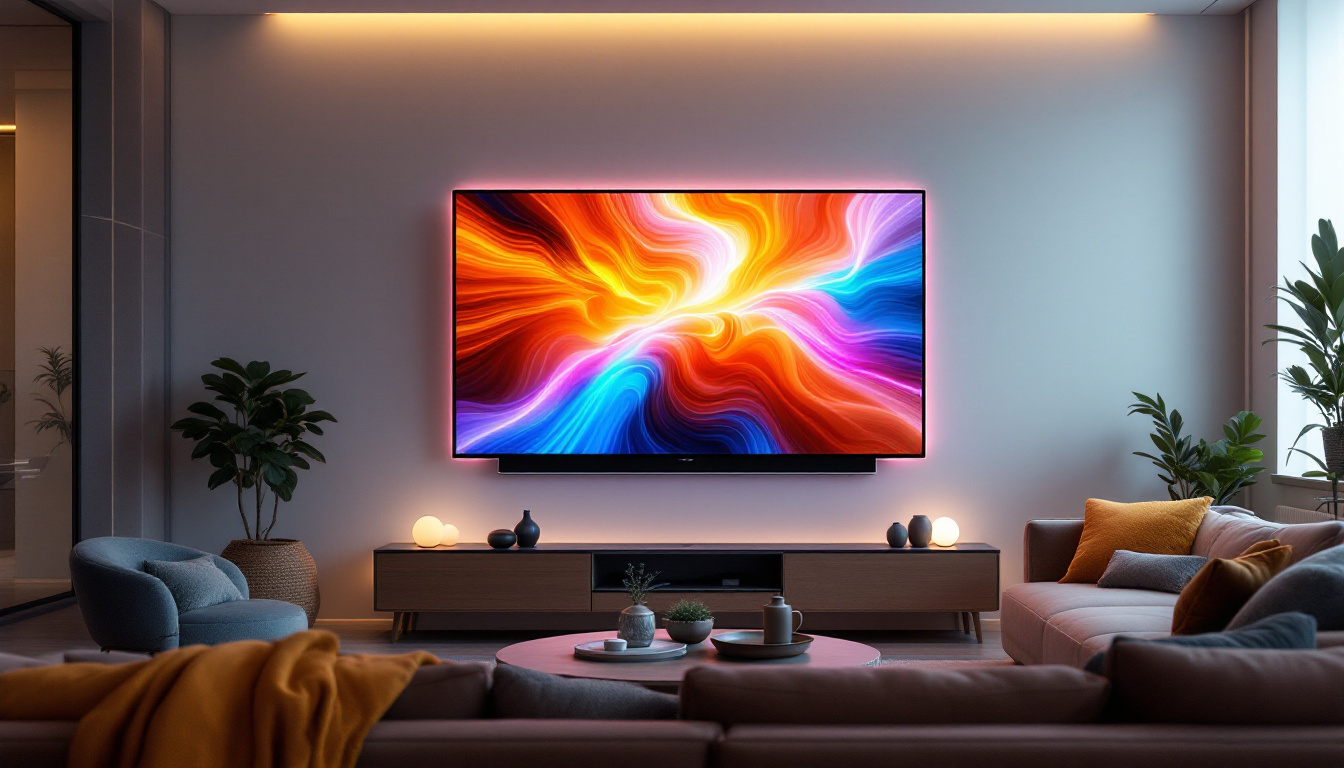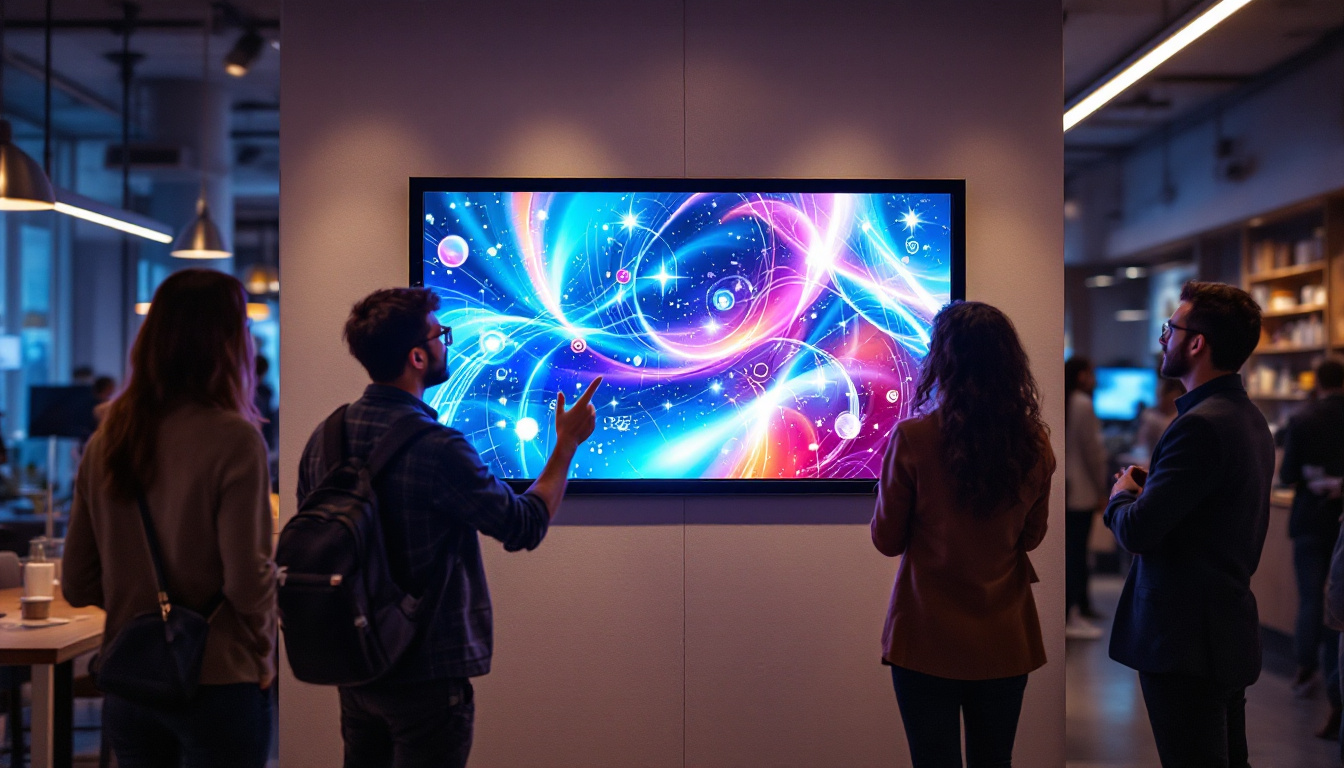In the modern educational landscape, technology plays a crucial role in enhancing learning experiences. One of the most innovative tools that have emerged is the interactive projector, particularly those utilizing LED display technology. This article delves into the functionalities, benefits, and considerations of using interactive projectors in classrooms, providing educators with valuable insights into this transformative tool.
Understanding Interactive Projectors
Interactive projectors are devices that allow users to project images, videos, and presentations onto surfaces while enabling interaction through touch or gestures. Unlike traditional projectors, interactive projectors turn any flat surface into an interactive display, making them ideal for classrooms where engagement is key. This technology not only enhances the learning experience but also fosters collaboration among students, encouraging them to participate actively in discussions and group activities.
In addition to educational settings, interactive projectors have found applications in various industries, including business and entertainment. For instance, in corporate environments, these projectors can be used for dynamic presentations and brainstorming sessions, allowing teams to visualize ideas and concepts in real-time. Similarly, in the entertainment sector, they can transform ordinary spaces into immersive experiences, captivating audiences with interactive displays that respond to their movements and inputs.
How Do Interactive Projectors Work?
At the core of an interactive projector is a combination of hardware and software that facilitates interaction. The projector emits an image onto a surface, such as a whiteboard or wall, and uses sensors to detect touch or movement. This technology can include infrared sensors, cameras, or even laser technology, depending on the model. When a user interacts with the projected image, the system recognizes the input and responds accordingly, allowing for a dynamic learning experience. This responsiveness is crucial, as it enables educators to create a more engaging atmosphere where students can explore concepts hands-on.
Moreover, many interactive projectors come equipped with software that supports various educational tools, such as drawing applications, quizzes, and collaborative platforms. This integration enhances the interactive experience, enabling students to participate actively in lessons. Some advanced models even allow for multi-user interaction, meaning several students can engage with the content simultaneously, fostering teamwork and communication skills. This capability is particularly beneficial in group projects or collaborative learning environments, where students can share ideas and work together seamlessly.
Types of Interactive Projectors
Interactive projectors can be broadly categorized into two types: interactive short throw projectors and interactive ultra-short throw projectors. Short throw projectors can project large images from a short distance, making them suitable for smaller classrooms. In contrast, ultra-short throw projectors can create large images from even closer distances, minimizing shadows and glare, which is particularly beneficial in settings where space is limited. These projectors are designed to be mounted just inches away from the projection surface, allowing educators to move freely without obstructing the view.
Additionally, some models feature built-in interactive capabilities, while others require external devices, such as interactive pens or touch-sensitive screens, to enable interaction. Understanding the differences between these types is essential for educators looking to select the right projector for their classroom needs. Furthermore, the choice of projector can also depend on the specific teaching style and the subjects being taught; for example, a science class may benefit from a projector that supports 3D modeling, while a language arts class might prioritize tools for collaborative writing and editing. As technology continues to evolve, the versatility and functionality of interactive projectors are likely to expand, offering even more innovative solutions for educators and learners alike.
The Advantages of LED Display Technology
LED display technology has revolutionized the way interactive projectors function. With its vibrant colors, energy efficiency, and longevity, LED displays offer several advantages over traditional projection technologies.
Vibrant and Clear Images
One of the standout features of LED displays is their ability to produce bright and vivid images. This is particularly important in a classroom setting, where ambient light can often wash out projected images. LED projectors maintain high brightness levels, ensuring that students can see the content clearly, regardless of the lighting conditions.
Furthermore, LED technology provides a wider color gamut, allowing for more accurate color reproduction. This is especially beneficial for subjects like art and science, where color differentiation is crucial for understanding concepts. The enhanced clarity and detail in images also enable educators to present intricate diagrams or detailed visuals, fostering a more engaging learning environment. Students are more likely to retain information when they can see high-quality visuals that capture their attention and stimulate their curiosity.
Energy Efficiency and Longevity
LED projectors are known for their energy efficiency. They consume less power compared to traditional lamp-based projectors, making them a more sustainable choice for schools looking to reduce their energy bills. Additionally, LED bulbs have a significantly longer lifespan, often lasting up to 20,000 hours or more. This longevity reduces the need for frequent replacements, ultimately saving schools money in maintenance costs.
Moreover, the reduced heat output of LED projectors contributes to a more comfortable learning environment. Traditional projectors can generate significant heat, which may necessitate additional cooling systems in classrooms, further driving up energy consumption. In contrast, LED projectors operate at cooler temperatures, allowing for quieter operation and less distraction during lessons. This combination of energy efficiency and operational comfort makes LED technology an appealing choice for modern educational institutions striving to create optimal learning conditions while being mindful of their environmental impact.
Enhancing Classroom Engagement
One of the primary goals of any educational tool is to enhance engagement among students. Interactive projectors, particularly those with LED technology, excel in this area by creating an immersive learning environment.
Interactive Learning Experiences
Interactive projectors allow educators to create dynamic lessons that go beyond traditional lecturing. With the ability to annotate, highlight, and manipulate content in real-time, teachers can engage students in discussions and collaborative activities. For instance, students can work together to solve problems projected on the screen, fostering teamwork and critical thinking skills.
Moreover, interactive projectors enable the integration of multimedia resources, such as videos, animations, and simulations. This variety not only captures students’ attention but also caters to different learning styles, ensuring that all students have the opportunity to engage with the material effectively.
Fostering Collaboration
Collaboration is a key component of modern education, and interactive projectors facilitate this by allowing multiple users to interact with the projected content simultaneously. This feature encourages group work and peer-to-peer learning, as students can share ideas and solutions in real-time.
Additionally, many interactive projectors support connectivity with other devices, such as tablets and laptops. This connectivity allows students to share their screens and collaborate on projects, further enhancing the interactive experience.
Considerations for Implementation
While interactive projectors offer numerous benefits, there are several considerations that educators and administrators should keep in mind when implementing this technology in classrooms.
Cost and Budget
Interactive projectors can be a significant investment for schools, and budgeting for this technology is essential. The initial cost of the projector, along with any necessary accessories and software, should be carefully evaluated against the potential benefits. Additionally, schools should consider the long-term savings associated with energy efficiency and reduced maintenance costs.
It may also be worthwhile to explore funding opportunities, such as grants or partnerships with technology companies, to help offset the costs of acquiring interactive projectors.
Training and Support
Successful implementation of interactive projectors requires adequate training for educators. Teachers must feel comfortable using the technology and integrating it into their lesson plans. Providing professional development opportunities and ongoing support can help educators maximize the benefits of interactive projectors in their classrooms.
Furthermore, schools should consider establishing a support system for troubleshooting and maintenance, ensuring that any technical issues can be addressed promptly to minimize disruptions in the learning environment.
Real-World Applications in the Classroom
The versatility of interactive projectors makes them suitable for a wide range of subjects and educational activities. Here are some real-world applications that highlight their effectiveness in enhancing learning.
STEM Education
In STEM (Science, Technology, Engineering, and Mathematics) education, interactive projectors can be used to visualize complex concepts and data. For example, teachers can project 3D models of molecules or mathematical graphs, allowing students to interact with and manipulate these representations. This hands-on approach fosters a deeper understanding of abstract concepts.
Additionally, interactive projectors can facilitate coding and robotics lessons by allowing students to collaborate on projects and share their screens to demonstrate their work. This collaborative environment encourages creativity and problem-solving skills, essential components of STEM education.
Language Arts and Literature
In language arts classes, interactive projectors can be used to enhance reading and writing activities. Teachers can project texts, enabling students to annotate and discuss passages in real-time. This interactive approach promotes critical thinking and comprehension skills.
Moreover, interactive projectors can facilitate creative writing exercises by allowing students to brainstorm and organize their ideas visually. This can be particularly beneficial for visual learners who may struggle with traditional writing methods.
Conclusion
Interactive projectors with LED display technology represent a significant advancement in educational tools, offering a multitude of benefits that enhance classroom engagement and learning experiences. By understanding the functionalities, advantages, and considerations of these devices, educators can make informed decisions about their implementation in the classroom.
As technology continues to evolve, the integration of interactive projectors will likely become increasingly prevalent in educational settings. By embracing this innovative tool, schools can foster collaboration, creativity, and critical thinking among students, preparing them for success in an ever-changing world.
In summary, the interactive projector is not just a tool; it is a gateway to a more engaging, collaborative, and effective learning environment. As educators explore new ways to inspire and educate, interactive projectors will undoubtedly play a pivotal role in shaping the future of education.
Discover LumenMatrix LED Solutions for Your Classroom
Ready to transform your educational environment with the latest in LED display technology? Look no further than LumenMatrix, a leader in innovative LED solutions that bring lessons to life. From interactive projectors to dynamic digital signage, our range of products, including Indoor and Outdoor LED Wall Displays, Vehicle LED Displays, and more, are designed to captivate and engage students of all ages. Elevate your teaching and inspire your students by exploring the possibilities with LumenMatrix. Check out LumenMatrix LED Display Solutions today and take the first step towards an immersive learning experience.

